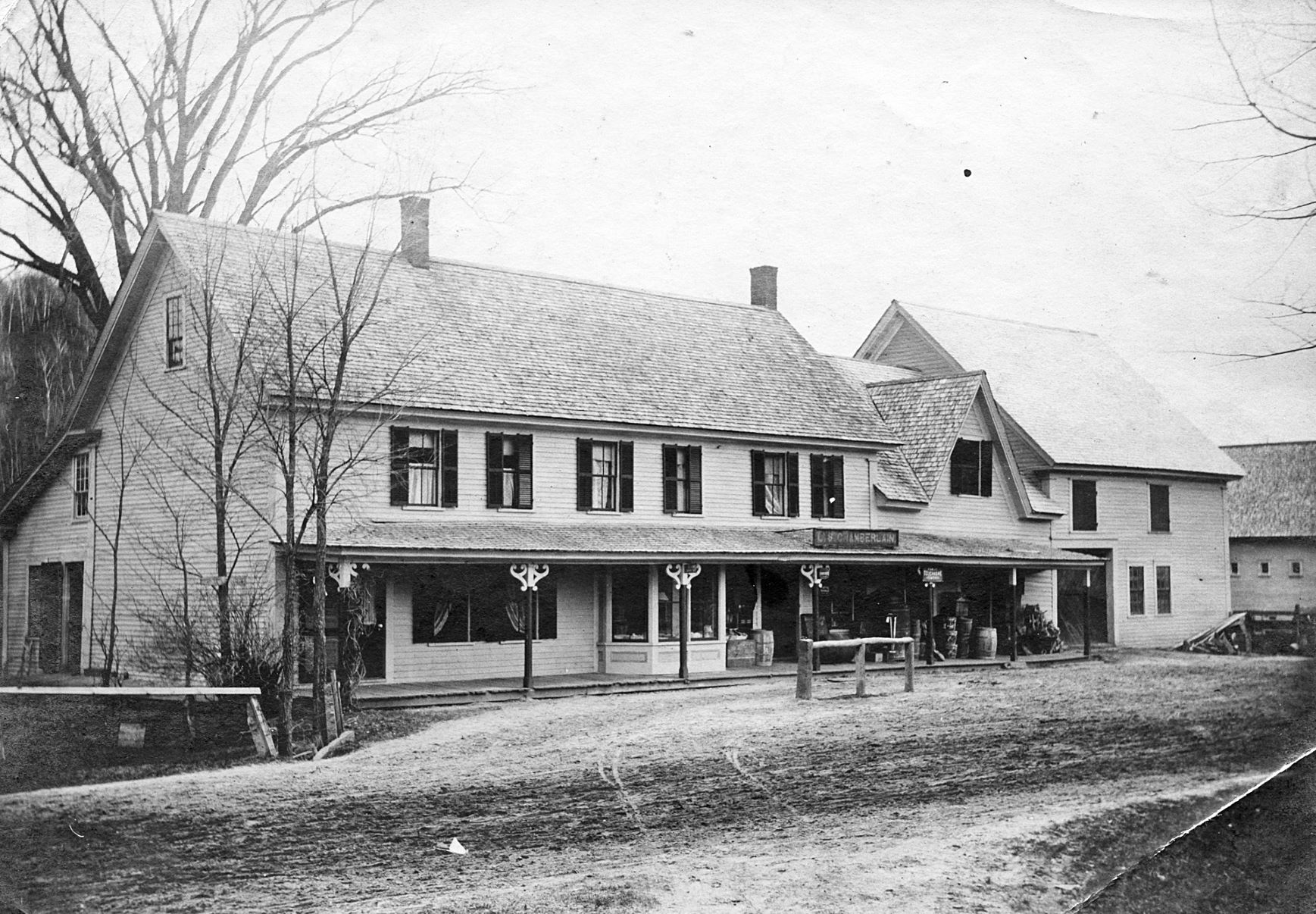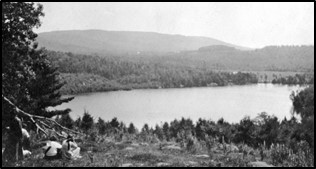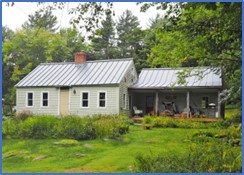Francis Rand (1616-1691) was the original immigrant from this branch of the Rand family of England, arriving in the part of Portsmouth that is now the town of Rye, NH in 1631. He came here as a party of settlers organized by Captain John Mason to inhabit the land granted to Mason in 1629 along the Piscataqua River. This area became Portsmouth in the Province of New Hampshire which eventually became Rye. He and his wife were killed by Native Americans in 1691.
Benjamin Rand (1730-1790) was born in Rye, New Hampshire in 1730 to parents Nathaniel and Mary (Noble) Rand. In 1769 he began building his homestead in Saville (named Wendell in 1781 and Sunapee in 1850) located on the banks of today’s Rand Pond (called Little Sunapee Pond then) When this part of Sunapee was incorporated into the new town of Goshen in 1791, he became Goshen’s first permanent settler. While living in Sunapee he fought in the Revolutionary War, marching to Rhode Island in September of 1777 with Capt. Joseph Parson’s Company.
Very often the contributions of women to history are overlooked. In his History of Goshen Walter Nelson recounts several stories of the bravery of the wives of Goshen’s early settlers. One is that of Temperence Dickenson Rand (1764-1839). One winter when the family found themselves with little food left, her husband travelled to Walpole, NH to purchase more provisions. He was trapped there for six days due to a violent snowstorm, leaving his family with little food. Mrs. Rand’s infant child had recently died, and she nursed her youngest child to help keep her family alive. During a time of physical and emotional stress she faced the starvation of her family with courage and ingenuity.
Walter Nelson describes the Rand property as being situated on a hill side on the northern shore of Rand Pond. A log cabin and barn supported the farm, and a blacksmith shop provided Rand’s main source of income.
Benjamin Rand, Jr. (1765-1833) was born in Rye, NH three years before his family moved to Sunapee. In 1788 he married Temperence Dickinson in Westminster, Vermont, and according to Walter Nelson, in 1795 he was a blacksmith in Weathersfield, VT. However, in 1785, five years before his father’s death, he was deeded the Goshen property and the births of their seven children from 1789 to 1803 are listed as taking place in Goshen. He continued the blacksmith trade as his father before him.
Benjamin Rand IV* (1797-1825) purchased the Rand property from his father in 1819. He was also a blacksmith and farmer. In 1821 he married Margaret Chandler, and they had three daughters. Unfortunately, due to his “intemperate habits” Benjamin Rand IV died in 1825. His parents still resided on the farm with his wife Margaret, who was soon remarried to Tobias Lear. They had three daughters, and eventually the home farm passed into the hands of Delos G. Jones, husband of the Lear’s youngest daughter Margaret.
* It is not clear why this third Benjamin Rand was called Benjamin Rand IV.
Memorials to the Rand Family
The Rand family has been honored for their place in Goshen history through the years. The family has been the focus of many Old Home Day celebrations, with visits to the property on Rand Pond. In 1919 a bronze tablet was placed at the family homestead. Also, from 1926 to 1930 Goshen’s YMCA was known as the Benjamin Rand Pioneers.


1769
UPON THIS SPOT ARE BURIED
CAPT. BENJAMIN RAND
AND
WIFE
WHO CAME TO THIS PLACE FROM RYE, N.H.
IN THE YEAR 1769 AND WAS WITH WILLIAM
LANG AND DANIEL GRINDLE AND PROBABLY
DANIEL SHERBURN THUS BECAME THE FIRST
SETTLERS OF GOSHEN.
BENJAMIN RAND SERVED IN THE REVOLUTION
1777, COL. SENTER’S BATTALION, UNDER
JOSEPH PARSONS OF RYE.
IN MEMORY OF THESE, WHO SERVED THEIR
STATE AND COUNTRY WELL, THIS TABLET IS
DEDICATED BY GRATEFUL TOWNSPEOPLE.
1919



